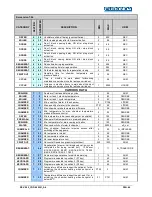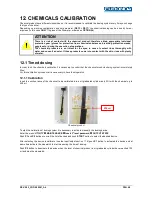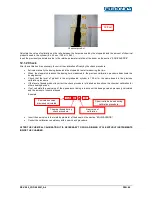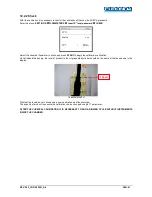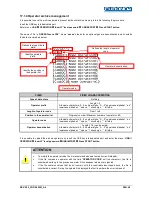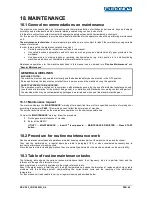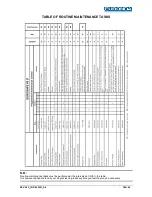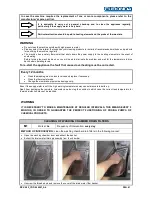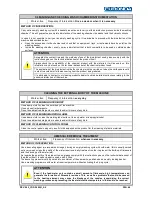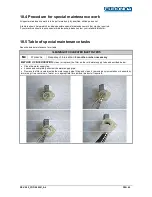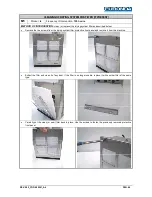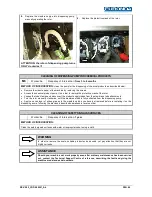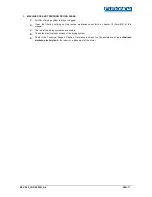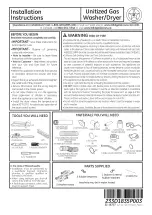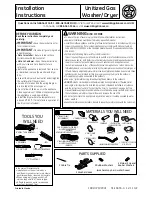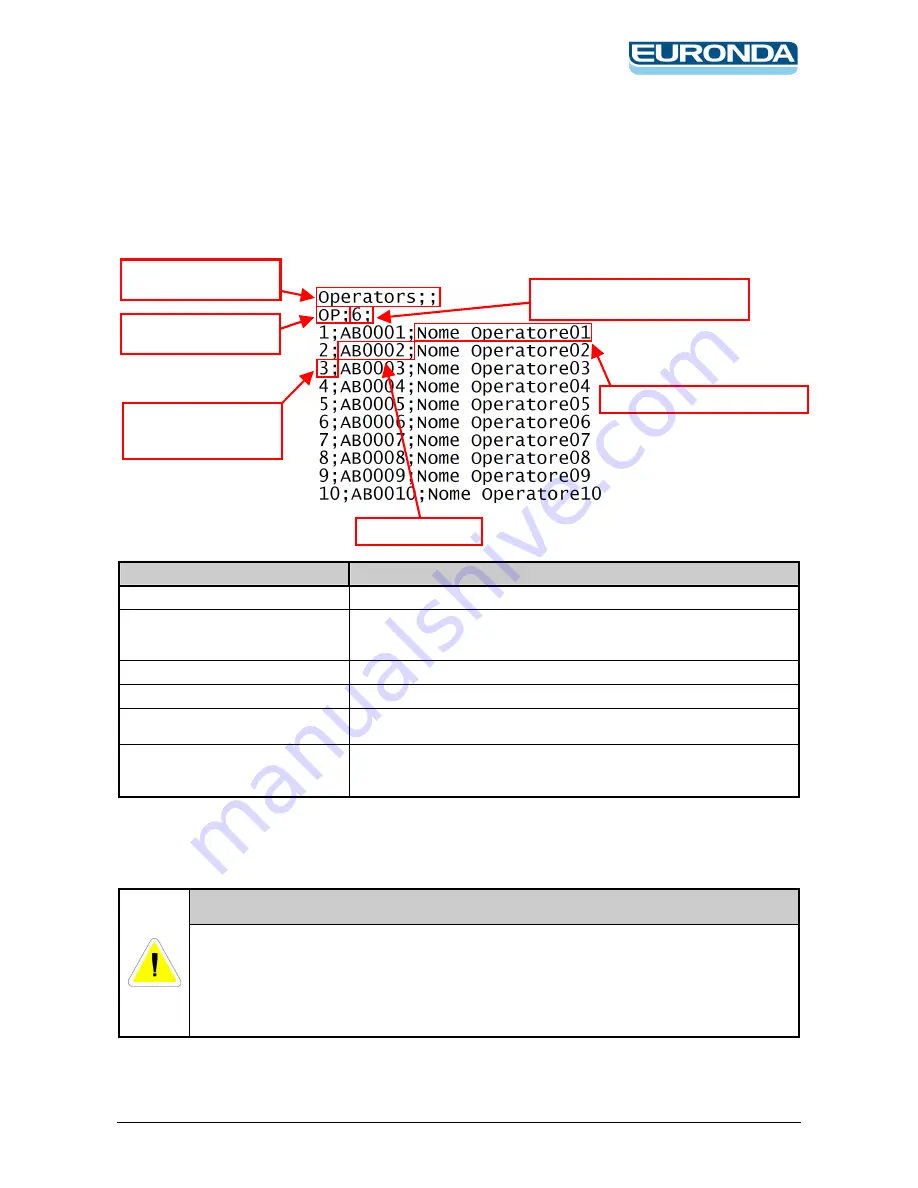
REV.0.02_COD.500201_A4
PAG. 58
17.1.4 Operator archive management
It is possible to save the archive operators present inside of machine memory into a file following the procedure:
Insert the USB key into dedicated port.
Enter menu: USB
→
→
→
→
OPERATOR
→
→
→
→
Insert 3
rd
level password
→
→
→
→
USB EXPORT
→
→
→
→
Press START button.
The name of file is “OPERATxxxxx.CSV”, where “xxxxx” stands for an optional generic denomination and it contains
the data structured as below:
FIELD
FIXED CHARACTERISTICS
Type of data store
Nothing
Operator prefix
Length = 2
Allowable characters: 0…9 number digits, “A…Z” uppercase alphabet, “a..z”
lowercase alphabet, “ “ space, “-“ minus sign, “.” full stop.
Lenght of operator code
From 1 to 8
Position in the operator list
Progressive order (Maximum number of operators = 60)
Operator code
Allowable characters: 0…9 number digits, “A…Z” uppercase alphabet, “a..z”
lowercase alphabet, “ “ space, “-“ minus sign, “.” full stop.
Operator denomination
Length
≤
16 (can be empty)
Allowable characters: 0…9 number digits, “A…Z” uppercase alphabet, “a..z”
lowercase alphabet, “ “ space, “-“ minus sign, “.” full stop.
It is possible to upload the archive operators by insert the USB key into dedicated port and enter the menu: USB
→
OPERATOR
→
→
→
→
Insert 3
rd
level password
→
→
→
→
USB IMPORT
→
→
→
→
Press START button.
ATTENTION
•
To modify the operator archive file it is recommended use a text editor (ex. Notepad).
•
If the file contains an operator with the field “OPERATOR CODE” null (no character), the file is
considered valid up to the previous operator. All subsequent element are ignored.
•
If the file contains values that do not comply with the constraints described above, the file is
considered incorrect. During the upload it is displayed the first line where the error is present.
Defines the type of data
store.
Identify operatore
prefix.
Identify the position in
the operator list.
Defines the length of operator
code.
Operator denomination.
Operator code.

